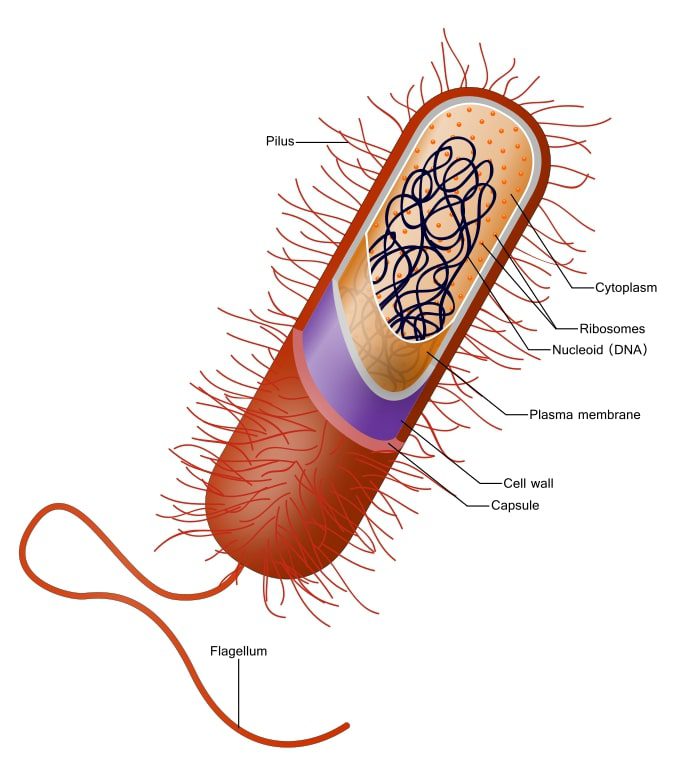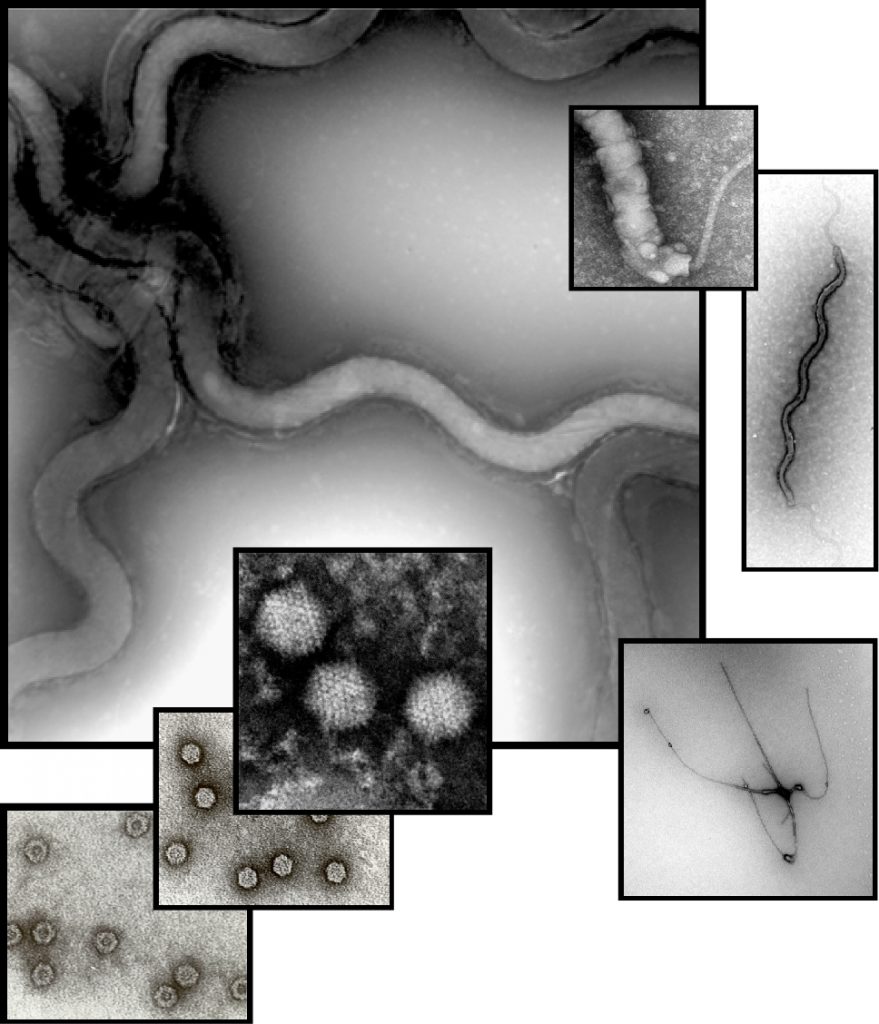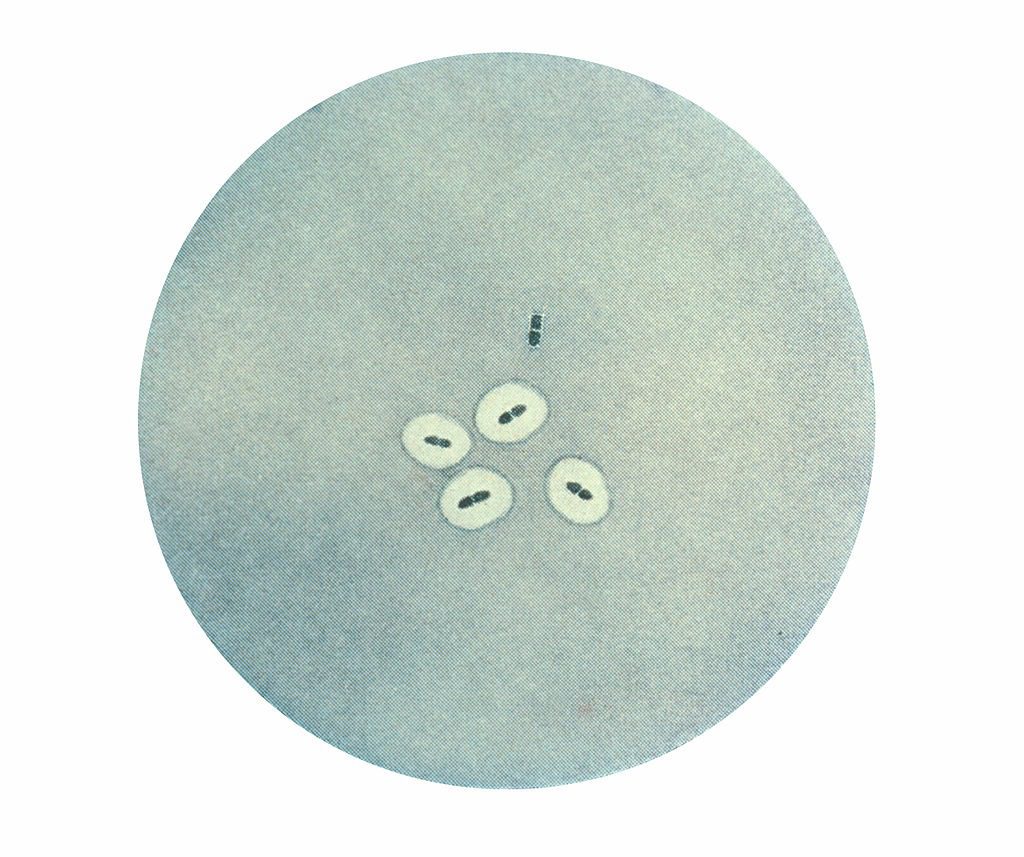Original article: La capsula batterica, by Raffaella Giannone
General characteristics
The term bacterial capsule (Fig. 1) means a series of components positioned outside the bacterial cell wall. They are the components of the bacterial wall itself that often contribute to the capsule’s formation. The bacterial capsule is not present in all bacteria but only in some of them. The factors that determine its presence can be genetic and environmental.
- Genetic: it is necessary that the bacterial cell has, in its chromosomal makeup, the genes responsible for the synthesis of enzymes involved in the formation of the capsule;
- Environmental: it is necessary that in the growth environment of the bacterium there are the constituent of the compounds that the capsule needs.
As a synonym of the capsule, we can also use the term glycocalyx because of the glycosidic nature of its components.

Composition and structure
The bacterial capsule consists of three components. Therefore, we can observe from the inside to the outside: S-layer, capsule proper, and mucous layer.
- The S-layer is the most attached to the bacterial cell wall. It consists of proteins and glycoproteins that can be assembled in dimers, trimers and hexamers, thus forming a protein network with aqueous pores, useful for filtering certain substances.
- The capsule itself is made of polysaccharides (both homopolymers and heteropolymers). Only in some cases this layer is made of peptides, in fact in Bacillus anthracis the capsule is made of D-glutamic acid.
- The mucous layer has a more variable composition as it consists of polysaccharides, or proteins, or both. Its shape is not well defined, in fact its constituents are not firmly bound together.
Function
Each component of the bacterial capsule performs one or more functions.
The S-layer acts as a molecular filter. The aqueous pores present in the protein network, with a diameter of 2-3 nm, hinder the entry of larger molecules, such as lithic enzymes, potentially harmful to the cell. This layer also protects the bacterium from ionic fluctuations, pH changes, and osmotic stress.
The intermediate layer performs different functions related to its composition:
- Avoid drying: the sugars forming this layer are hydrophilic molecules, they retain and absorb water protecting the cell from dehydration;
- Promotes cell-cell and cell-substrate adhesion;
- Reserve: from polysaccharides are obtained by reduction of sugar monomers used as an energy source in case of need;
- Virulence: the presence of the capsule eludes the host’s non-specific defence mechanisms, namely phagocytosis.
On the other hand, the mucous layer reduces cell-cell and cell-surface friction, thus facilitating movement by gliding.
Some bacterial capsules also have the characteristic of collecting the antibiotic elements to prevent them from entering the bacterial cell. The bacterial capsule also affects the pathogenicity of bacteria. For example, Streptococcus pneumoniae causes pneumonia only when equipped with a capsule. This is because the cells responsible for destroying the bacterium are inefficient against the capsulated forms.
Microscopic observation
Generally, the bacterial cell is observed under a light microscope or electron microscope. Two techniques are used to mark the bacterial capsule under the light microscope: negative staining and Neufeld’s reaction.
- For negative staining, Nigrosin is used, but the color is not absorbed by the bacterial capsule. Only two regions are stained: the environment in which the bacterium is located and the body of the bacterium itself. The capsule, which is devoid of color, is displayed as a large white halo around the bacterium (Fig.2);

- The Neufeld reaction (or quellung reaction) is based on the fact that the polysaccharide components of the capsule act as antigens for specific antibodies. Antigen-antibody bond induces swelling of the capsule, facilitating its identification. The swelling is probably due to increased antibody-mediated capsule hydration. (Fig.3)

La capsula batterica – Translated by Luigi Gallucci
Bibliography
- Lansing M. Prescott, Microbiologia generale vol.1, McGraw-Hill Education, 2009
- https://www.biopills.net/capsula-batterica-struttura-e-funzioni/
- http://www.infonotizia.it/capsula-batterica-definizione-riassunto-breve-e-schemimappe-concettuali/
- https://www.studentidibiologia.it/microbiologia/strutture-esterne-della-cellula-batterica-capsula/
- http://www.treccani.it/enciclopedia/capsula/
- https://it.wikipedia.org/wiki/Capsula_batterica
- Featured image: Ali Zifan